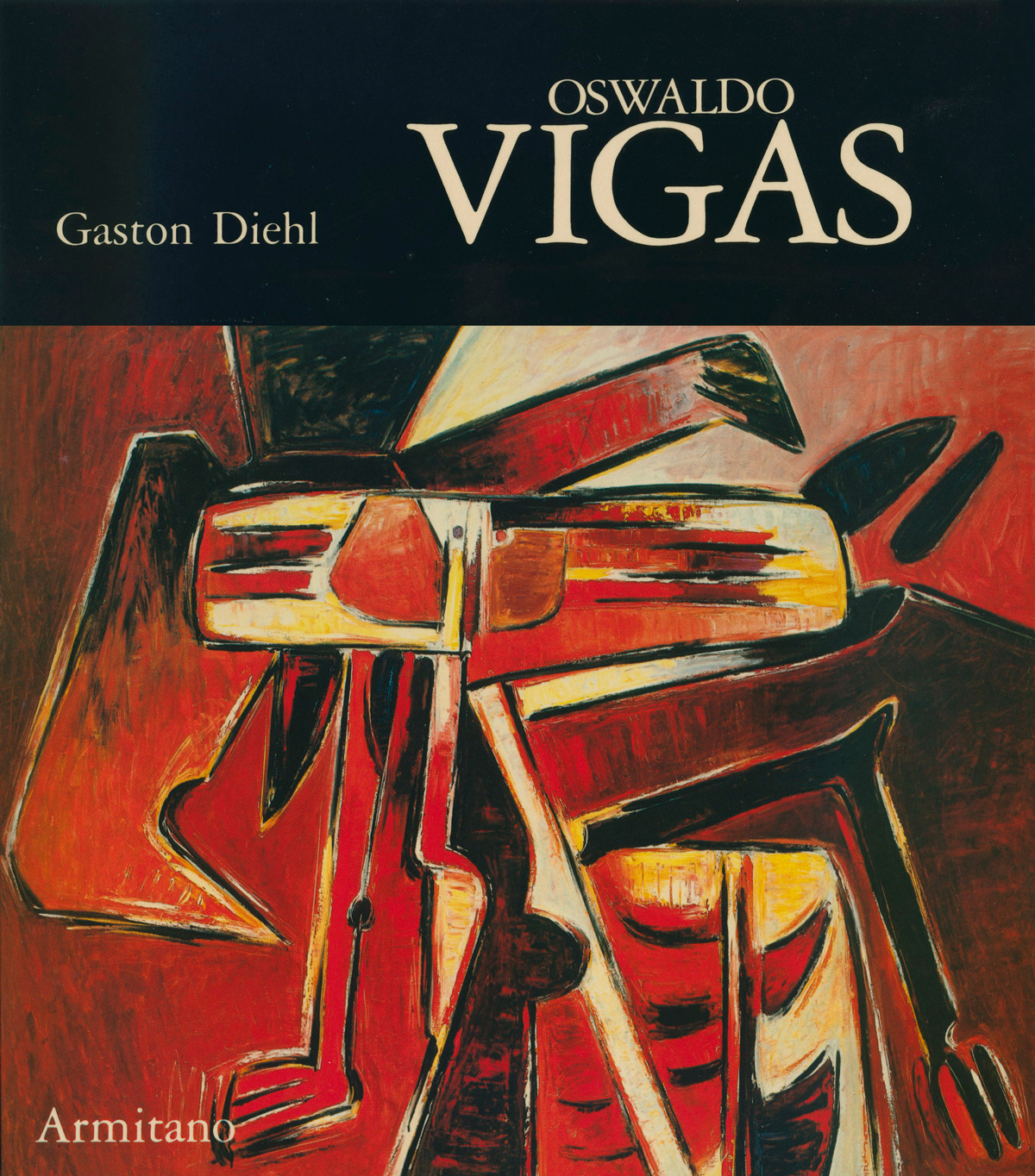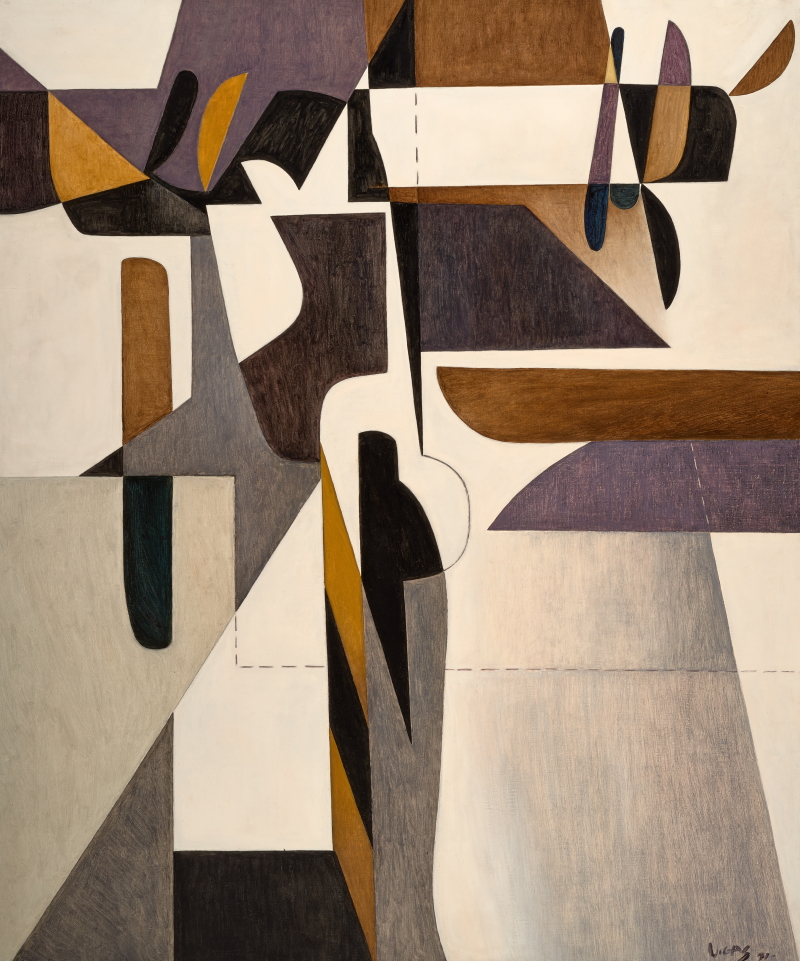Oswaldo Vigas. Gaston Diehl
Written by the historian and French art critic Gaston Diehl, and translated to Spanish by the writer, poet and Venezuelan critic Juan Liscano, Oswaldo Vigas is a book that compiles the work of the known Venezuelan artist from his first steps in art until the end of the eighties. His experiences, studies and influences come together in this publication.
Gaston Diehl establishes the start of Oswaldo Vigas in art as a time of self-knowledge, experimentation and learning for the artist; in content and shape, while he floated in the magic universe of Venezuela, seduced by its myths and pre-Columbian roots, that paved the way for Las Brujas, which gave him the merit to be the winner of the National Prize for Visual Arts in 1952.Thanks to this prestigious prize Oswaldo Vigas had the opportunity to go to Paris, where he stayed until 1964.
During this period, his language began to transform in search of the essential, the great symbolic figures started to fade away letting in the frontiers of geometric abstraction and later to the informality of violent brush strokes full of matter, that with his return to Venezuela gave life to images filled with myths born from the anger. The author reveals in his work how Vigas was never influenced by the trends of the moment, he was always faithful to himself and his beliefs, faithful to the roots of America.
Leyendas del mañana
Oswaldo Vigas, Leyendas de Mañana, written by the historian and theoric of Venezuelan art, Carlos Silva, who did a profound study and analysis of Oswaldo Vigas work, making emphasis on the pieces he made from 1993. For the author, this period was particularly important, because it can be observed a significant rupture of the artist’s plastic language. This change on Vigas work happened after an exhibition at the Monnaie de Paris, this exhibition was composed of several pieces that resumed his artistic past. After forty years of artistic production Oswaldo Vigas changed his interests from his gods to submerge himself in a representation of the vital or mundane, submitting to the essential.
The change of language in Vigas work gave place to new structures that reinvented themselves, into a colorful and lineal synthesis, where the plain and homogeny chromatism was predominant.
Coming Soon
The work of Oswaldo Vigas will be assembled on an ambitious publication that the Foundation that bears his name is currently preparing: a book that will become an extraordinary compilation of outstanding researches about his career as an artist.
For this publishing project, The Oswaldo Vigas Foundation will bring together texts by renowned art specialists, who will embody from different perspectives the importance of his contribution in the global context. Venezuelan curator Bélgica Rodríguez, will address the study of the work of Oswaldo Vigas in the context of Latin American art; Marek Bartelik, from the U.S., who has a Master of Science degree and a doctorate in art history at the Graduate Center of the City of New York; has been professor of modern and contemporary art at Cooper Union for the Advancement of Science and Art in New York since 1996, and also has been a visiting professor at Yale University and MIT, and currently serves as President of AICA International, will conduct a study on Vigas and the international context. Alvaro Medina from Colombia, winner of the Colcultura National Prize in 1993, curator of the Museum of Modern Art in Bogotá, novelist and art critic, author of nine books and who is currently a professor at the Institute of Aesthetic Studies of the National University of Colombia, will develop the theme of Vigas and pre-Hispanic art, while Lisbeth Rebollo, writer and art critic from Brazil will contribute with other aspects of Vigas’ work.




